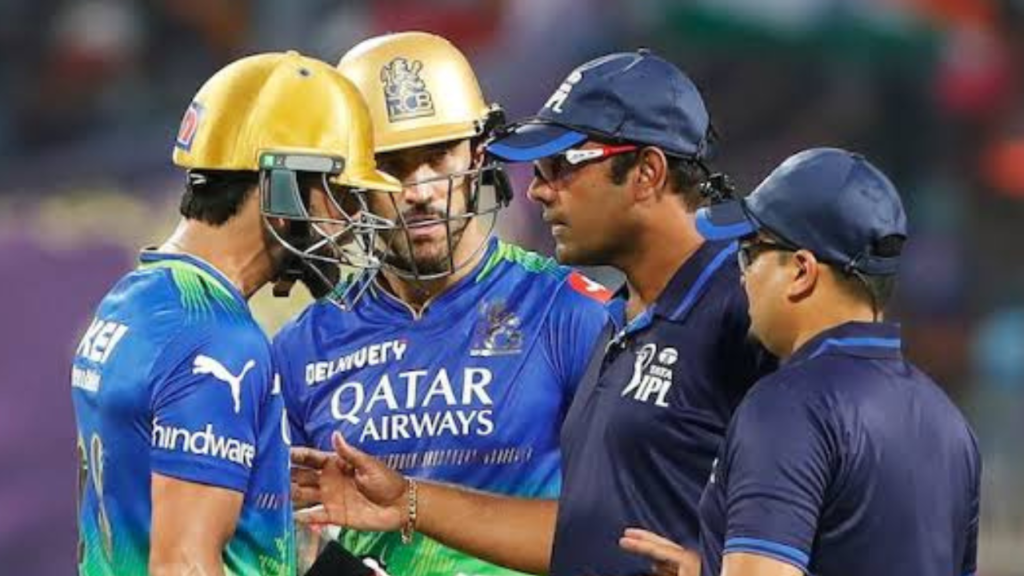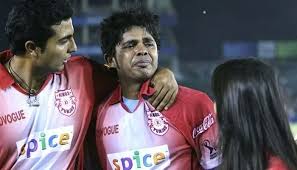
With TV channels, newspapers and social media debating the fallout of the Sanjiv Goenka-KL Rahul conversation at the end of an IPL match in Hyderabad, RevSportz looks back at three other occasions when the IPL was in the news for non-cricket reasons.
IPL’s Moses banished into the wilderness
In the days leading up to the Indian Premier League (IPL) final at the DY Patil Stadium in April 2010, India’s English-speaking sports audience had begun to familiarise itself with phrases like ‘sweat equity’ and ‘shell corporations’, which usually belonged on the pages of financial newspapers. But ever since two new franchises had been announced, in Kochi and Pune, the grapevine – social media was still nascent in 2010 – was abuzz with innuendo about the ownership of the proposed Kochi team.
In the end, with Lalit Modi adding fuel to the fire with cryptic comments of his own, the controversy cost Shashi Tharoor his position as a minister in the second Manmohan Singh government. But you don’t upset powerful politicians and the establishment and get away scot-free. Almost overnight, stories about Modi’s alleged stakes in three IPL franchises – accounts which had gradually gone mute after first being reported in 2008 – were resurrected and there were demands from the corridors of power for enquiries into large-scale corruption in the IPL.
Much as he tried to bluster his way through it – there was even an emotion-tinged speech at the end of the final, referencing Martin Luther King, Lord Krishna and others – it was a battle Modi could not win. In the most telling slight, Shashank Manohar, the BCCI president, N Srinivasan, the board secretary who also happened to own Chennai Super Kings (CSK), and Niranjan Shah, the IPL’s vice-chairman, stayed away from the summit clash. And almost as soon as he had left the stage at the end of the presentation ceremony, Modi was dramatically served his papers. In reality, the first ‘Dear Lalit’ missive had landed in his email inbox earlier, and he knew his fate was sealed. After three years where he had been front and centre of what would go on to become by far the biggest cricket extravaganza on Earth, the man who had been compared to Moses was cast into the wilderness.
The cricket enthusiast who nearly destroyed a franchise
If it was the Delhi Police that pulled the rug from under Hansie Cronje’s feet in 2000, they and their counterparts in Mumbai, Jaipur and other cities had a big role to play in what would become as big a scandal a generation later. The names may not have been as big – Sreesanth was the highest-profile casualty – but the spot-fixing scandal of 2013 had seismic repercussions for the IPL. To begin with, it involved the two teams that had featured in the first final back in 2008 – CSK and the Rajasthan Royals – and the direct involvement of team owners ensured that the final weeks of the tournament were played out in a zombie-apocalypse kind of atmosphere.
For the Royals, Raj Kundra’s explanations didn’t cut much ice with anyone. But his role was completely overshadowed by that of Gurunath Meiyappan, Srinivasan’s son-in-law and a member of the famous AVM family at the heart of the Tamil film industry. Ever since the IPL began, Meiyappan had been identified at the team principal. There were literally reams of newsprint about his role within the organisation, not to mention hours of footage and stills of him from team meetings. For the franchise to then say that he was merely a ‘cricket enthusiast’ who had no role to play in decision-making was daft in the extreme. It would eventually lead to the Lodha Committee banning the franchise from the league for two seasons (2016 and 2017). As for Meiyappan, he vanished into the same wilderness that had claimed Modi three years earlier.

A slap in time
When the IPL began in 2008, many eyes were on how players who had been teammates with their national teams would react to being adversaries in a cash-rich league. There were stories from Australia of discontent in the dressing room over the contract that Andrew Symonds had landed with Deccan Chargers, worth more than thrice what Ricky Ponting, his national captain, was making with Kolkata Knight Riders.
But when the flashpoint came, it featured two Indian players who had been part of the team that won the inaugural World T20 in South Africa in 2007. A week into the tournament in Mohali, Harbhajan Singh was the pick of the Mumbai Indians’ bowlers as Kings XI Punjab piled up what was then an astronomical total of 182. The home team romped home by 66 runs, with Sreesanth taking 2-31. That should have been that, but as the two sets of players exchanged pleasantries after the game, Harbhajan’s open palm made contact with Sreesanth’s cheek.
There was some history there. Sreesanth’s on-field antics had rubbed many, even teammates, the wrong way. During the Greg Chappell years, he had been one of the young talents that the coach promoted. Harbhajan was one of the established stalwarts who was gradually sidelined. And while both played a part in the WT20 win, it was Sreesanth who bowled the spell of the tournament against Australia and took the decisive catch in the final. Harbhajan and others of his ilk were about to be overtaken by a wave of ‘mystery’ spinners.
These tensions came to the fore that Mohali night, and as Sreesanth sobbed in front of the cameras, Harbhajan’s fate was sealed. Banned for the season not long after, he had to watch his team narrowly miss out on a play-off spot. Sreesanth ended up as Punjab’s leading wicket-taker (19), as they finished with 10 wins in the league phase.
The two would patch up later, and be teammates again when India won the World Cup in 2011, but Slapgate was the first sign that bonds formed on national duty could easily fray under the bright lights of the IPL tent.



